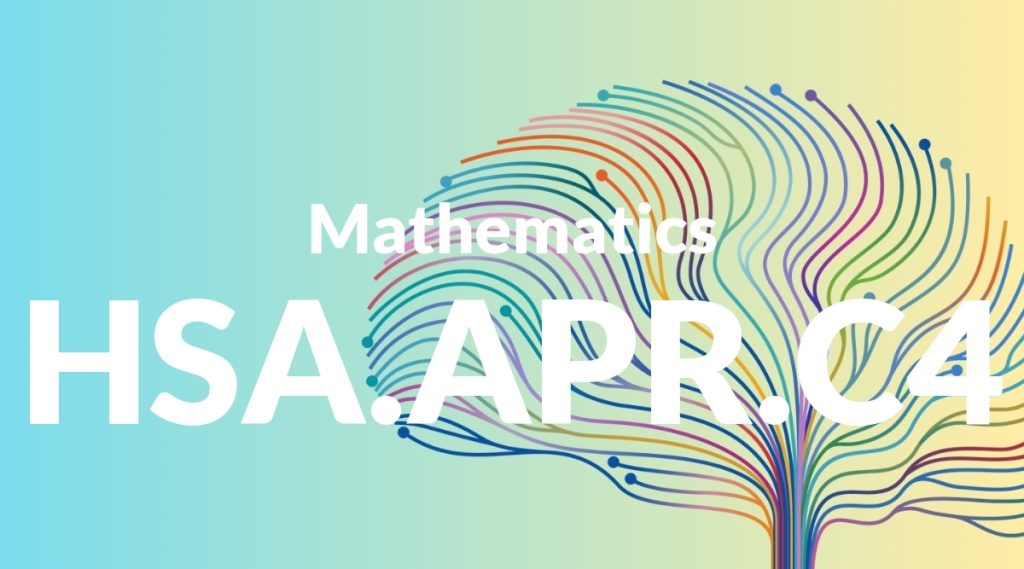Standard: HSA.APR.C4 – Prove polynomial identities and use them to describe numerical relationships. For example, the polynomial identity (x² + y²)² = (x² – y²)² + (2xy)² can be used to generate Pythagorean triples.
Grade level: High School: Algebra
Subject: Mathematics
Domain: Arithmetic with Polynomials & Rational Expressions
Teacher Overview
This standard focuses on proving polynomial identities and using them to describe numerical relationships. Understanding these identities is crucial for students as it lays the foundation for more advanced mathematical concepts and applications. In the broader context of high school algebra, mastering polynomial identities enhances students’ problem-solving skills and prepares them for higher-level math courses. Students should be comfortable with basic algebraic operations and have prior knowledge of polynomial equations and trigonometric identities. This foundational understanding is essential for grasping the concept of polynomial identities.
Once students master this standard, they will be able to apply polynomial identities in more complex algebraic problems and real-world scenarios. This knowledge will also prepare them for advanced mathematical topics, including calculus and higher-level algebra.
Common Misconception 1
A common misconception is that polynomial identities are purely theoretical and lack practical application. This is incorrect because polynomial identities can be used in various real-world scenarios, such as generating Pythagorean triples and solving geometric problems.
Intervention 1
To address this misconception, teachers can provide concrete examples of how polynomial identities are used in real-world applications. Demonstrating the generation of Pythagorean triples using polynomial identities can help students see the practical value of these mathematical concepts.
Common Misconception 2
Another misconception is that students often confuse polynomial identities with polynomial equations. They might think they need to solve for variables in identities, which is not the case. Polynomial identities are true for all values of the variables involved.
Intervention 2
Teachers can clarify this misconception by explaining that polynomial identities are always true and do not require solving for variables. Using examples to differentiate between identities and equations can help solidify this understanding.
Prerequisite Knowledge
Students should have a solid understanding of basic algebraic operations, including addition, subtraction, multiplication, and division of polynomials. They should also be familiar with the concept of polynomial equations and basic trigonometric identities.
Subsequent Knowledge
After mastering this standard, students will be equipped to tackle more complex algebraic concepts such as solving polynomial equations, understanding rational expressions, and applying polynomial identities in calculus and advanced mathematics.
Instructional Activities
- Exploring polynomial identities through hands-on activities and manipulatives
- Using graphing calculators to visualize polynomial identities
- Solving real-world problems that involve polynomial identities
- Collaborative group work to prove and discuss polynomial identities




